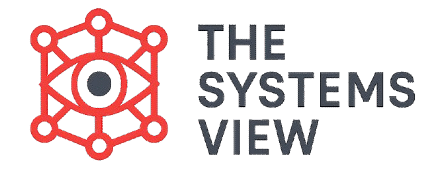If you have ever tried to manage a complex problem with a simple solution and failed, you have run into the Law of Requisite Variety. This law is the single most important principle in Cybernetics for anyone who seeks to control, manage, or regulate a complex system.
The law was developed by the cyberneticist W. Ross Ashby, who studied the universal rules of stability and control. The law dictates the relationship between a system and the person or mechanism trying to control it. It provides a simple, mathematical rule for diagnosing why complex situations spiral out of control.
The Law: Only Variety Can Absorb Variety
The Law of Requisite Variety states: “Only variety in the control system can force down the variety in the system being controlled.”
In simple language, this means: A regulator must be as complex as the system it is trying to control.
What is “Variety”?
In cybernetic terms, variety is the number of possible states, actions, or problems a system can exhibit. High variety means high complexity.
- Low Variety Example: A traffic light only has a variety of three (red, yellow, green).
- High Variety Example: A modern market economy has an immense variety—millions of products, customer preferences, global supply chains, and political risks.
The Law’s Implication for Control
For the controller (e.g., a manager, a government, a steering wheel) to successfully regulate the system, it must have enough requisite variety (a sufficient number of countermeasures or responses) to match the challenges coming from the system being controlled.
If the variety of the system being controlled is greater than the variety of the controller, the control will fail, and the system’s complexity will win.
The Mechanism of Control: Managing Input
For a manager to handle a system’s high variety, they can use two primary strategies. The goal is always to reduce the necessary requisite variety of the controller.
1. Amplifying the Controller’s Variety
This strategy means increasing the number of responses, strategies, or capabilities of the control system.
- Example: A small business grows and faces a high variety of customer complaints (10 different types of complaints). The owner (the controller) must amplify their own variety by hiring specialists (a team of 10, each trained to handle one specific type of complaint) or by developing 10 different, customized response scripts.
- The Result: The controller’s complexity now matches the system’s complexity, leading to successful control.
2. Attenuating the System’s Variety
This strategy means reducing the complexity of the system being controlled so the controller needs fewer responses.
- Example: The company decides that instead of hiring 10 specialists, they will change their product. They remove 8 features that generated 90% of the complaints.
- The Result: The variety of customer complaints has been attenuated (reduced) from 10 types down to 2. Now the single owner can manage the system with a simple set of 2 responses, achieving control with less effort.
Ashby’s Insights and Real-World Failure
W. Ross Ashby’s work on the Law of Requisite Variety helps diagnose why well-intentioned efforts often fail in the real world.
The Failure of Simple Solutions
Most management failures occur because leaders try to apply a simple, single-variable solution to a problem with high variety.
- Example: The Traffic Jam: A city facing a high variety of traffic patterns (rush hour, school drop-offs, accidents) decides to use a single, fixed timing for all traffic lights. The control system (the fixed timer) lacks the requisite variety to match the problem. The system is therefore uncontrollable, leading to jams.
- The Cybernetic Solution: The city must install a responsive control system, like sensors and dynamic computer timing. This complex controller has a high variety of responses (changing light timings based on real-time flow) that can match the complexity of the traffic.
The Cost of Control
Ashby showed that control is not cheap. You must pay for it with complexity. You cannot have simple, cheap control over a complex, expensive system. The simplicity of the controller will always be matched by the complexity of the problems that slip through the cracks.
The Key Insight: The Law of Requisite Variety proves that the manager who only has a hammer will see every problem as a nail. To manage a system effectively, you must increase the complexity of your response (the variety) or simplify the system you are trying to regulate.
Conclusion
The Law of Requisite Variety is the foundational theorem for systems management. It proves that control is not a matter of trying harder; it is a matter of matching complexity. Any attempt to regulate a system with insufficient variety in the controller is doomed to failure. By actively seeking to either amplify the controller’s variety or attenuate the system’s variety, managers can intentionally design systems that are robust, stable, and truly governable.



